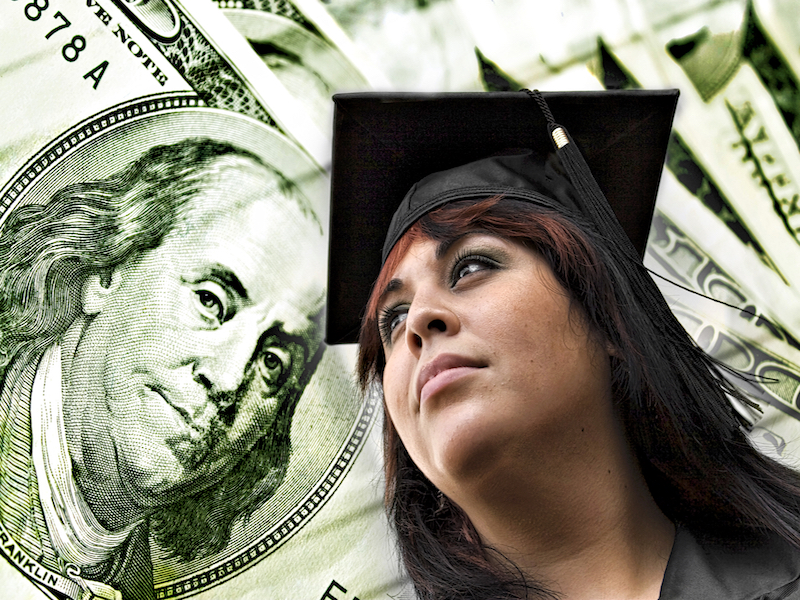Uncategorized
US Student Debt Levels Are Unprecedented

The crisis in higher education –a bubble about to burst.
Student Debt And Education Crisis Has Parallels To Housing Crisis
The amount of federal money devoted to student loans and its susceptibility to cause a bubble in the economy is a cause for increasing concern. In 2006, the amount of debt stood at around $100,000. Figures show it has increased by ten times that amount since 2010. It now stands at $1 trillion. In the current economic climate, the level of defaults is rising.
Some economists have drawn parallels with the housing bubble but acknowledge it is not as devastating as that crisis. The employment situation is seen as having a flow-on effect on the bubble by devaluing the worth of having a degree, just as happened in the housing market. Nevertheless, it is having an impact and causing concern for some educational institutions, families and government.
Unprecedented Increase In Debt
The way the education market is structured is feeding the problem. Subsidization is creating more demand, which is now pushing up costs, the opposite of what was originally intended. Unsustainable as it seems, college fees have risen by nearly 955% in the last 30 years. This is six times the rate of inflation.
Some statistics give a bleak picture:
- In 2015, student loans reached $900,000 compared to $100,000 in 2006
- $50 billion accrues to the government in profit from student loans, reducing the incentive to change
- Annual inflation has been over 3% per annum, but college tuition has risen about 7%
- Student debt has now overtaken credit card debt in the US
The Australian experience sees similar debt problems with their VET FEE system but with little prospect of repayment. Skyrocketing levels of lending are compounded by lending to students who will never qualify. This means the debt will end up being a taxpayer responsibility.
___________________________________
Must Read: Lower Your Student Loan Payment And Save Money
—————————————————————————————————–
Colleges Contributing To Bubble Crisis
The colleges in this situation are as seen as profiteers, given that the sector has a large for-profit sector. Increased spending on amenities by some colleges is seen as a necessity to attract students, but it only adds to the pressure to increase fees.
Some point to the problems that colleges are having, such as over-investment in top-heavy administration and the extent to which they are struggling with the competition from online learning, as other pressures causing fee increases.
1.2 Trillion In Student Loan Debt. A Bubble? What's happening here? https://t.co/h1SDj5rC1o pic.twitter.com/zJ4XgAnpcd
— The Capitalist (@Capitalist_Site) May 10, 2016
Is The Education Bubble Starting To Deflate?
However, some economists think that the bubble is starting to deflate and may not have as great an impact as feared. Admission rates are dropping, especially amongst lower-income sectors. Other factors that are leading to this collapse are the devaluation of the usefulness of some less vocational degrees and the increase in graduate unemployment.
Not all economists think that the education debt situation is a true bubble. They believe that view is short-sighted, and the value of an education is seen in a more long term view. They also point out that the rate of default on student loans is starting to decline, and that employment prospects are still better for graduates than non-graduates.
Government And Colleges Have A Part To Play
Also, some of the factors in the debt crisis that are under government control, such as funding levels, mean that it is not a true bubble. As the loans emanate from the government, laws have been passed to ensure better debt recovery.
Other factors when arguing against a bubble are the tenure situation and other general costs of colleges, as well as the drop in government funding. As these are controllable to some degree, it has been used to negate the argument that there is a bubble.
Education Bubble vs. Long Term Investment
One of the main arguments against the severity of the education bubble is that a degree continues to have value. Most commentators think that it is not in danger of sudden collapse, although in some parts of the debate, that is still open to question.
Some economists see it rather as an over-investment in capacity which will work itself out, albeit with some pain in the education sector. Added to which, some sectors are more vulnerable than others. Of course, the main victim may well be the cultural and social fabric of American society rather than an economic one.
Many research institutions are thought to be the ones that will suffer, which will have long-term consequences for the economy. Comparisons with other countries and their education fees have only served to heighten the belief that the bubble is about to burst in the US.
Already the government is starting to put solutions in place, to head off the severity of the bubble. Overall, the level of student debt is not sustainable, and structural change is needed on the part of the government and colleges. Major social impacts will result if the level of increase in college fees continues.















